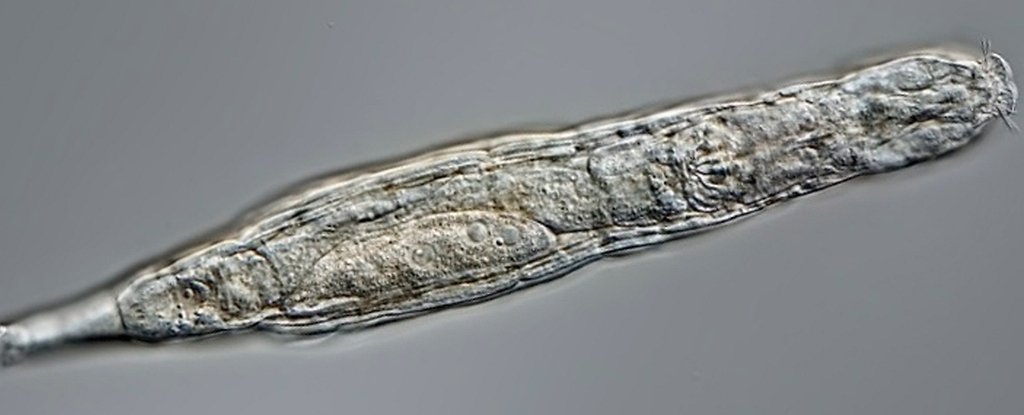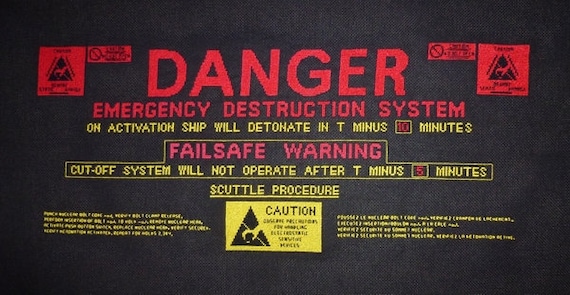
Posted on 06/07/2021 8:54:58 AM PDT by Red Badger

One of the revived rotifers. (Michael Plewka)
For tens of thousands of years, a microscopic creature lay frozen and immobile underground in the Siberian permafrost.
Yet, when scientists thawed it out, the tiny multicellular animal didn't just revive - it reproduced, suggesting that there is a mechanism whereby multicellular animals can avoid cell damage during the freezing process and wake up ready to rumble.
"Our report is the hardest proof as of today that multicellular animals could withstand tens of thousands of years in cryptobiosis, the state of almost completely arrested metabolism," said biologist Stas Malavin of the Soil Cryology Laboratory at the Institute of Physicochemical and Biological Problems in Soil Science in Russia.
The creature is one that is known today - a microscopic invertebrate called a rotifer. These tiny aquatic beasties live in bodies of water around the world, and their ability to survive conditions such as freezing and dehydration is fascinating.
Previous studies and experiments showed that they can survive for years in a state of cryptobiosis, in which the body hits pause on all biological functions - suspended animation, if you like. For a frozen state, we knew that they could survive for a decade.
The ancient Arctic permafrost has been an unexpectedly rich trove of ancient organisms that have survived millennia. These have included microbes such as viruses, as well as plants and moss. One exceptional recovery was a multicellular nematode, from permafrost older than 30,000 years.
The recovery of the rotifer, a freshwater species of the genus Adineta, suggests that the nematode's recovery wasn't just a wild fluke. The permafrost sample was collected from 3.5 meters (11.5 feet) below ground at the Alazeya River in Northern Siberia. It contained ice-rich loam from the Late Pleistocene; radiocarbon dating confirmed that the sample was around 24,000 years old.
The researchers maintained cultures from this sample, which contained a range of organisms - including a number of living rotifers. While in the lab, these tiny creatures reproduced by means of parthenogenesis; that is, asexual cloning, the only way rotifers can reproduce.
Their presence in the frozen sample - as opposed to contamination - was confirmed by looking for genetic material in the permafrost and comparing the ancient rotifers to modern species.
Then, the research team randomly selected 144 individuals of the revived strain and froze them again at a temperature of -15 degrees Celsius for a period of one week. The survivors were compared to frozen and revived members of contemporary freshwater rotifers. Fascinatingly, the ancient rotifers didn't seem to be significantly more freeze-resistant than modern rotifers.
The team's analysis suggests that, if the freezing process is relatively slow, the rotifers' cells can survive the formation of ice crystals with minimal damage, allowing them to survive - although how they can survive for tens of thousands of years is still unknown.
The team hopes to conduct further research into the process in the hopes of identifying the mechanism. This could then - with a very big maybe - help identify a way to protect the cells of more complex organisms, the researchers said.
"The takeaway is that a multicellular organism can be frozen and stored as such for thousands of years and then return back to life - a dream of many fiction writers," Malavin said.
"Of course, the more complex the organism, the trickier it is to preserve it alive frozen and, for mammals, it's not currently possible. Yet, moving from a single-celled organism to an organism with a gut and brain, though microscopic, is a big step forward."
The research has been published in Current Biology.
Thread winner
“Life always finds a way.” - Dr. Malcolm
Only this time it had help......................
What could go wrong?
Just because we “CAN” do something, doesn’t necessarily mean we “SHOULD”.
(((Paraphrasing Jurassic Park)))
>>....and now they are eating the researchers.
STATUS UPDATE: All is well. Send more researchers.
Some things are better left alone.........................
Indeed.
A sciency pun: fluke...a flatworm or something good that has happened that is the result of chance instead of skill or planning.
The creature is one that is known today - a microscopic invertebrate called a rotifer.
—
Now do woolly mammoths.
Fluke - An electronics corporation that makes excellent test equipment................

Val Kilmer in “ The Thaw”
Eureka, S3, E17 “Have an Ice Day”
What about Iceman?
I used Fluke thermometers, multimeters, etc. for many years; good equipment and very tough.
Now they are owned by the same International conglomerate that owns Tektronix as well..................
5000 year tops....................
“Could be 20,000, maybe even 40,000. You’ve just found a Neanderthal.”
Disclaimer: Opinions posted on Free Republic are those of the individual posters and do not necessarily represent the opinion of Free Republic or its management. All materials posted herein are protected by copyright law and the exemption for fair use of copyrighted works.